-
- USA/Canada 1-800-285-2726
- Australia (02) 8006 4411
The beloved TeamLab has relocated to Toyosu. There are 4 major exhibition spaces and 2 gardens Immersive and thought-provoking, walk into a digital garden full of lush flowers and let yourself merge into the space. Impact the piece and in turn, let the piece impact you while you become one with the art.
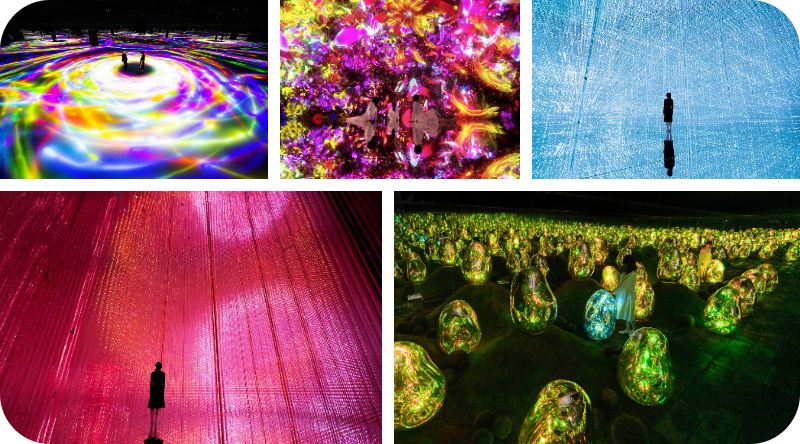
This featured exhibit is a three dimensional flower garden where you can become one with the garden
This exhibit is based off of a Zen Koan, a theological training by a Zen priest, which is called “Nansen’s Flower”.
The space is inspired by the idea that people and the flowers are of the same root, that they are all connected and become one through this piece. The flower is a mirror of the individual. When gazing upon the floating flower in this garden, it gazes back at you, both you and the flower becoming one with each other, truly being able to see flowers as itself for the first time.
The flower of this exhibit is an orchid, the last of the flower species to show itself on earth, making them the most evolved plants. Because of this, they evolved to be able to survive on rocks and trees, and have the most diversity; 10% of all plant species belong to the orchid family.
To convey the reality of the ever-changing orchids of our world, the event space mimics the change in scent and the scent of the artwork space is different depending on the time of day.
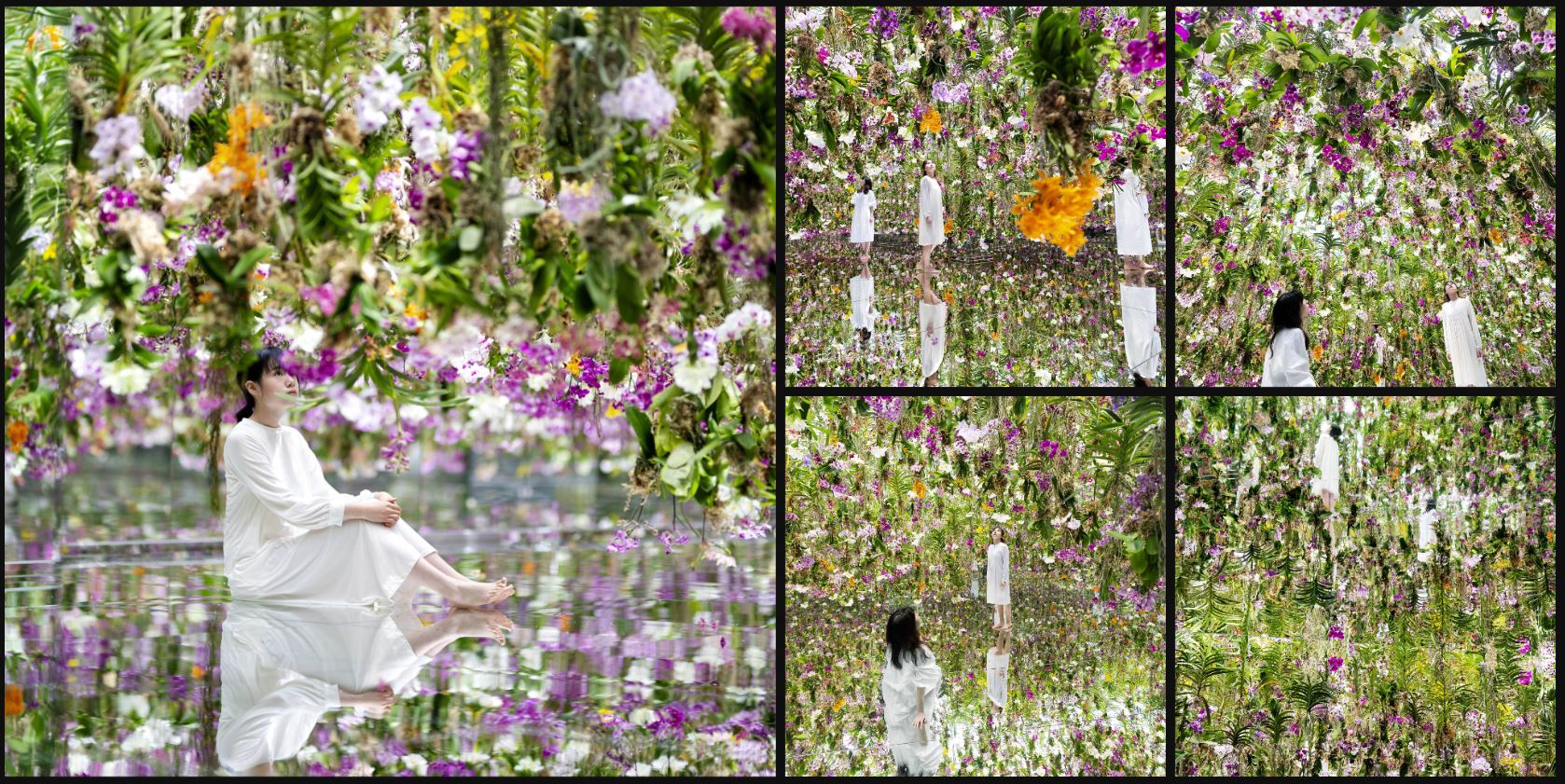
The digital moss garden is made of oval structures that change the light they emanate depending on the weather.
Visitors can influence the atmosphere of the room by touching or pushing any of the egg shaped masses, causing a ripple of illumination from the structure touched first.
Depending on when this exhibit is visited, the mosses will start glowing after sunset.
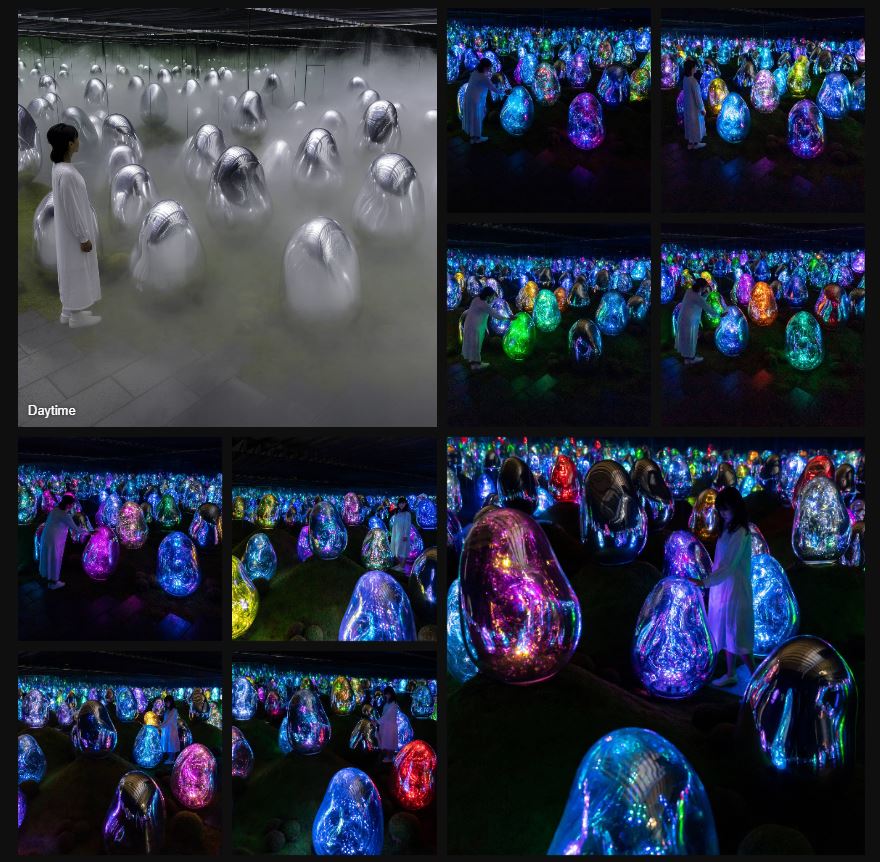
This exhibit is affected by the weight of people’s bodies, and in turn people are affected by the changes in space. Like a domino effect, this affects how people interact with each other in this installment. The Soft Black Hole is a piece that reminds us of our mass and the impact we have on the ground we weigh on. It is a reminder that man-made hard, flat surfaces aren’t everything and that in nature, no such thing exists.
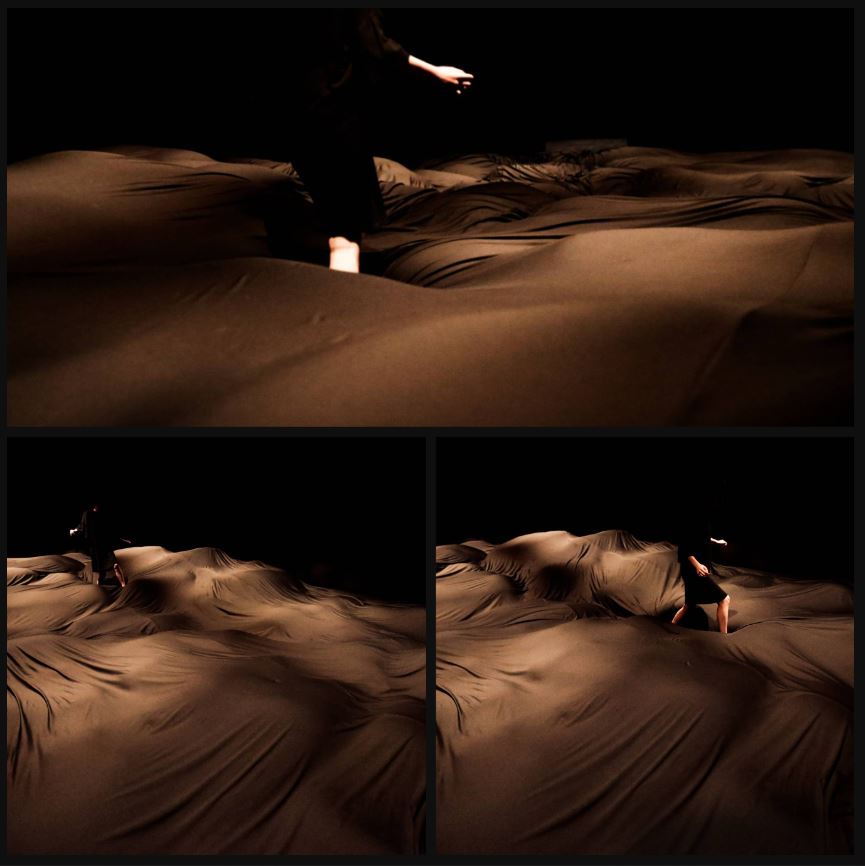
Visitors will experience the seasonal yearly cycle of life the flowers go through.
The piece of art is continuously rendered by a computer program which provides images that have never been seen before, in real time. Making it so that previous images cannot be replicated, much like life, the universe at any moment cannot be seen again.
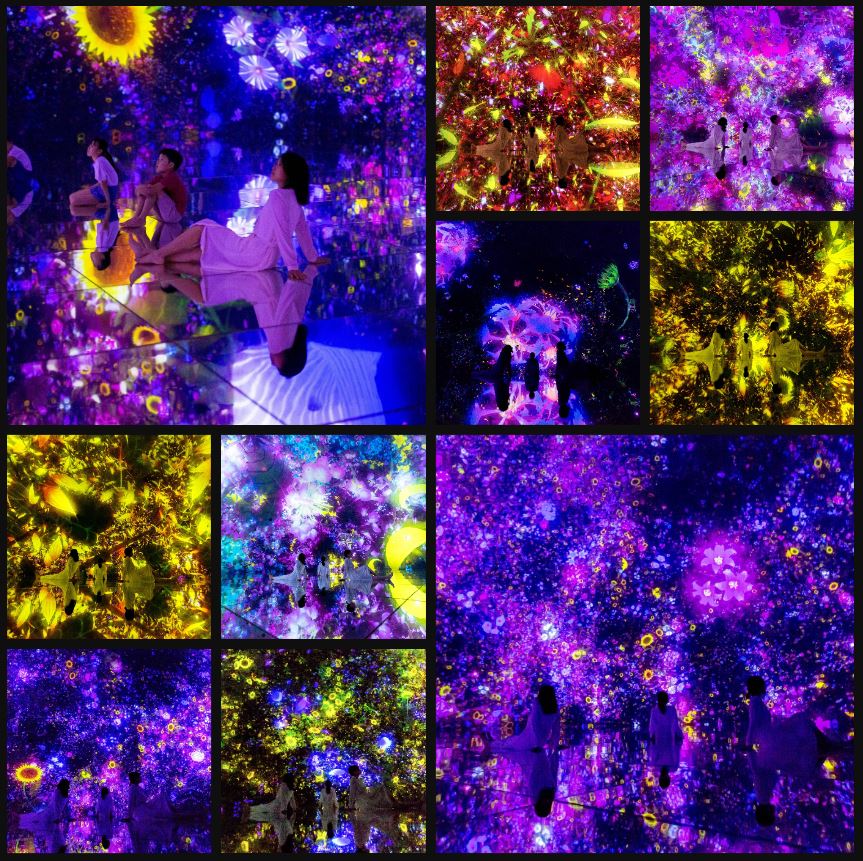
Shown in previous TeamLab locations, this piece uses pointillism to create a picture out of an accumulation of distinct dots. Light points create three dimensional objects which extend infinitely.

This installment has a space filled with spheres and free floating light. People and spheres exist in this space and affect each other by existing and changing the environment around them. The spheres are impacted by each person’s actions the shape of the space is determined by people's actions.
The spheres float around the area, pushing boundaries. The spheres change color when struck, the colors resonating outwards and forming a three dimensional space with the light, before flattening out the world around the viewer with color.

Visitors can experience existing alongside colorful koi that swim on the surface of the water that infinitely stretches
When people and koi collide, the koi burst into flower petals and scatter away. Depending on the year, the flowers that the koi turn into will change with the seasons, offering a sense of immersion that walks the line of reality and futuristic fantasy.
The koi will change the direction it swims in depending on where the people are at. This exhibit is done in real time and is neither pre recorded nor looped. As one of the most interactive installations in TeamLab Planets, changes in the artwork are made by the viewer and no two visual states can be replicated.
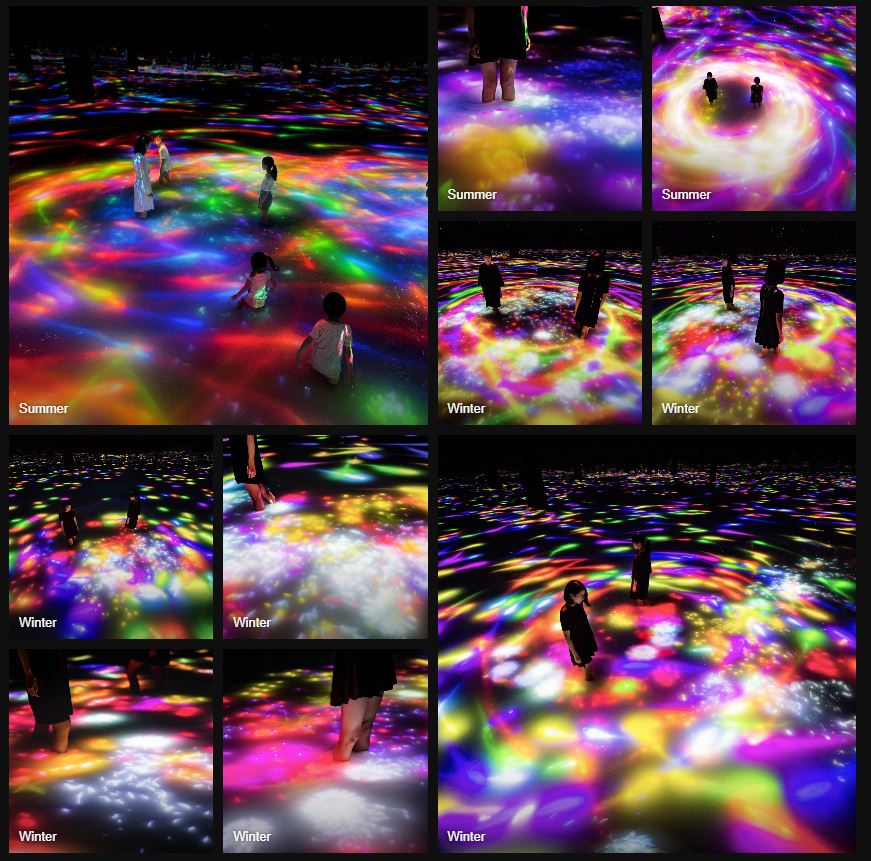
Based on their previous work, this work is made so that the waterfall has light reflecting off of it. The waterfall illuminating the room leaves a trail of light, which is an afterimage from the waterfall that draws lines where the water spills down.
